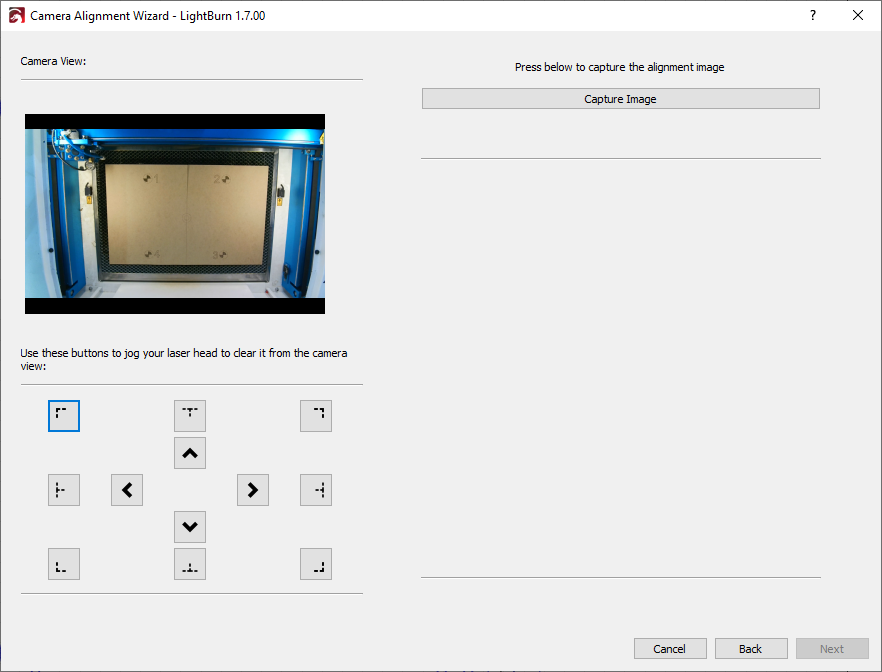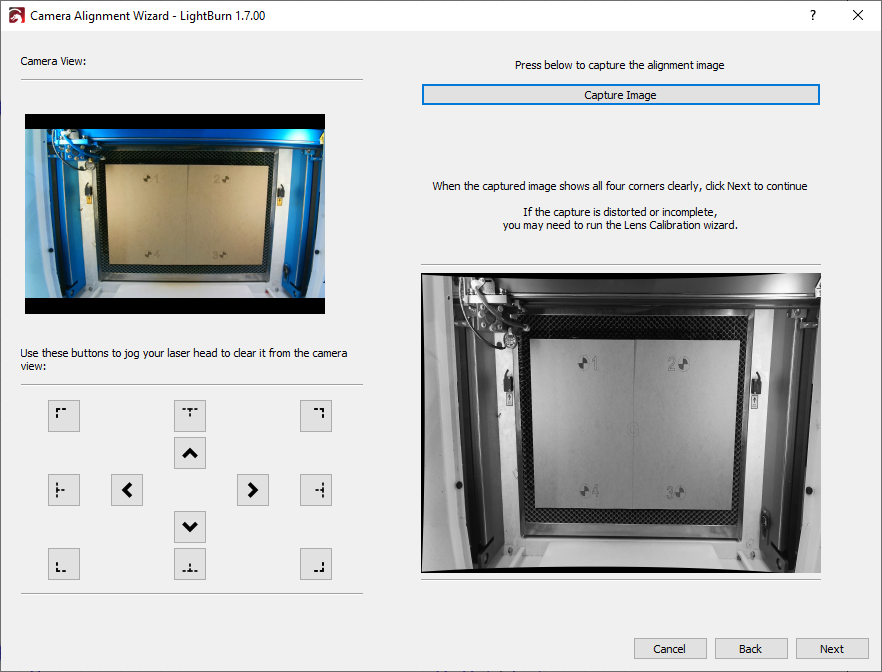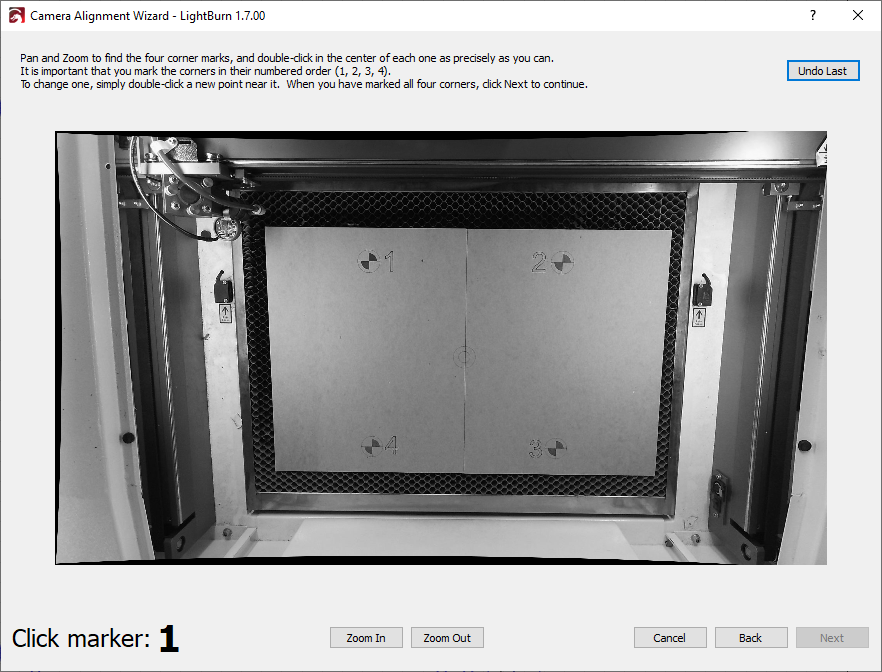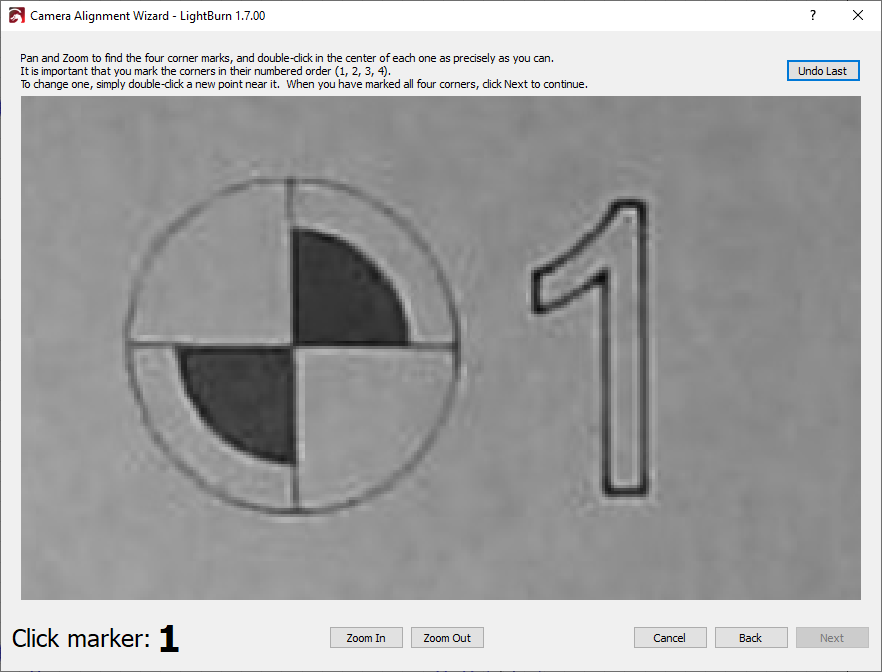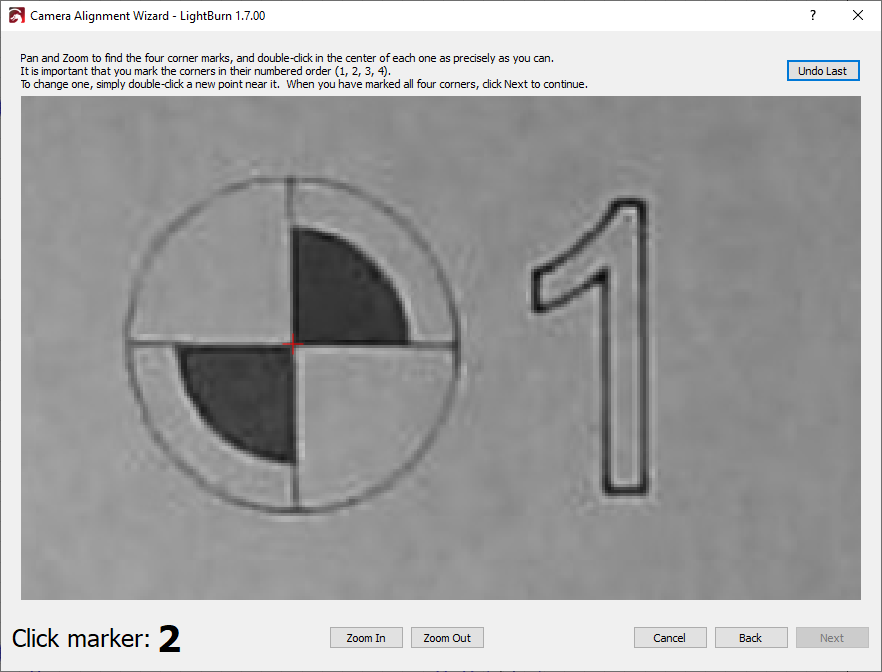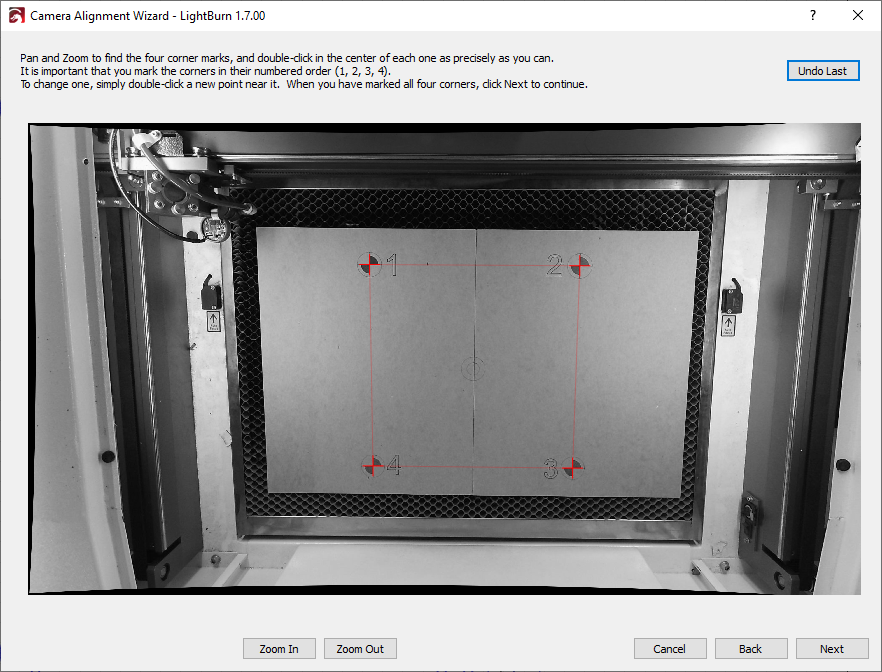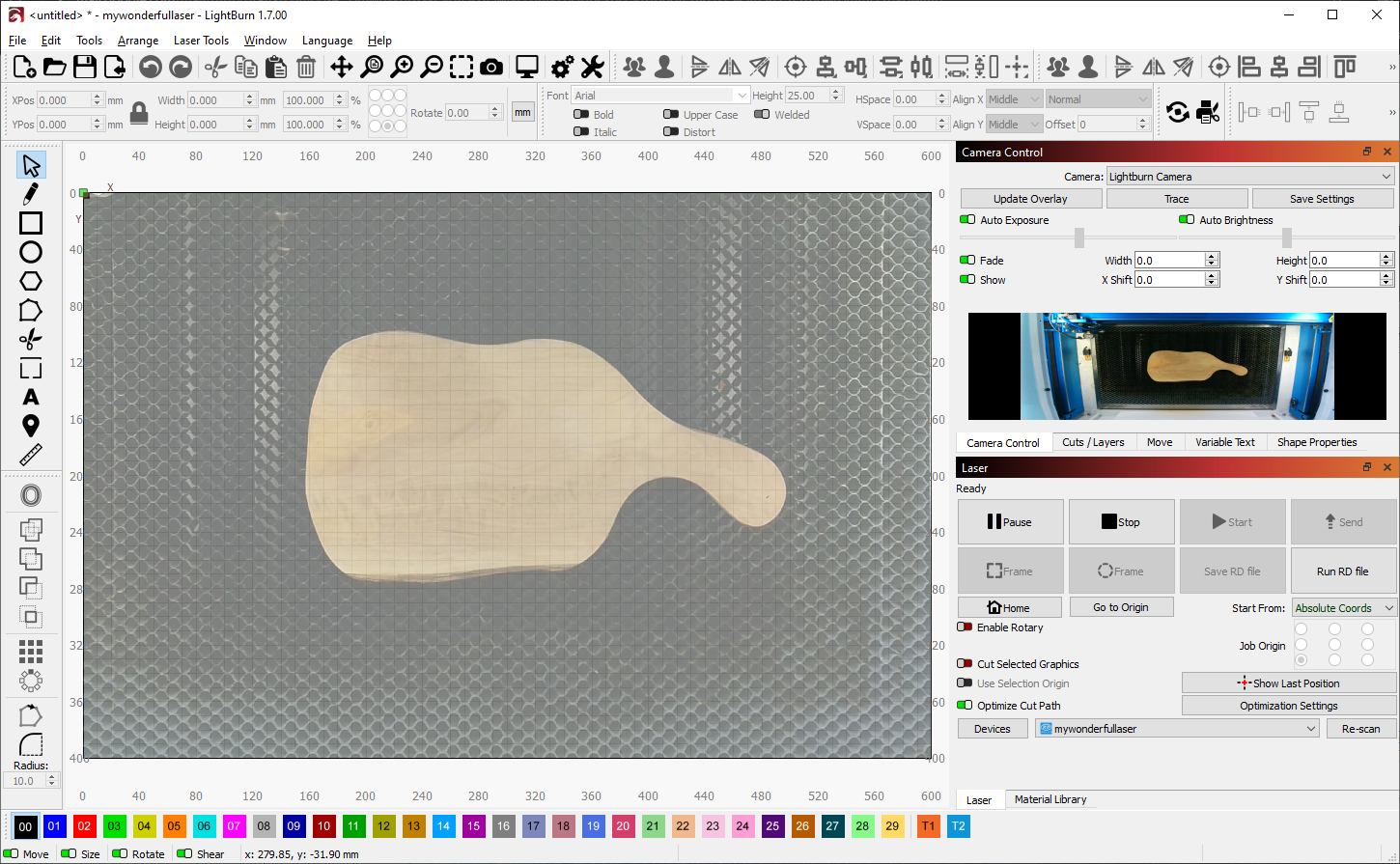Camera Alignment
After your camera's lens is calibrated, you can move on to the next step, alignment.
By engraving a target marker pattern and then tagging the markers in your camera's field of view, the alignment process tells LightBurn where your camera's capture is in relation to the work area of your machine.
Before you start, make sure the camera is firmly mounted in the position it will be in when you use it.
To begin the alignment process, go to Laser Tools → Calibrate Camera Alignment or right-click in the Camera Control window and select Calibrate Camera Alignment from the context menu.
Preparation¶
-
Make sure your camera is securely mounted and correctly positioned, as described in Camera Installation and Focusing.
Warning
You can mount the camera to a movable part of your laser, like the lid, but the camera must be be able to return to the exact same position it was in when you completed the alignment process, with each subsequent use. If the camera's position changes relative to your laser's work area, the overlay will be misaligned.
-
Place a piece of material into your laser that is large enough to engrave the target marker pattern onto — it must be at least 200 mm x 200 mm (roughly 8" square), but larger materials and engravings are much better for larger lasers.
- Focus your laser to the material you're using.
- In the Laser Tools menu, select Calibrate Camera Alignment to start the Camera Alignment Wizard. Select the same camera you used with the Lens Calibration Wizard.
- After verifying that you see an image from the camera, click Next to begin the alignment process.
Engraving the Target Markers¶
The rest of this process will be completed within the Camera Alignment Wizard, which will command your laser to engrave a target pattern onto a piece of material, such as card stock, paper, cardboard, or thin wood, and ask you to tag the center of the targets.
Important Preparation
Before starting the alignment process, make sure your camera is securely mounted in the position you'll be using it — any movement of the camera relative to your work area after completing the alignment process will cause misalignment later.
Step 1¶
Place your material in the center of your laser's work area.
Ignore the Material Thickness setting if you don't usually use it for your laser.
Additional Info
The Material Thickness setting is only used by lasers with a motorized Z axis that are not normally operated using Relative Z moves only.
Step 2¶
Enter appropriate Speed and Power settings to get a moderately dark engraving without burning through. This will vary based on your laser and the material you're using, so we can't provide these for you.
For best results, increase the Scale value to the maximum amount you can adjust it to while still fitting the target marker engraving to your material and work area.
Click 100% Scale to automatically adjust scale to a 200 mm (8") square — the engraving will fit on a typical sheet of A4 letter paper at this scale.
Click Fit Workspace to increase the scale to the maximum size that will fit in your laser's work area.
Step 3¶
Frame the pattern to make sure it's positioned on the material you're using.
Step 4¶
Start the engraving. If it's not dark enough, you can adjust the settings and run it again. When the pattern is clearly visible and easy to see, click Next.
Warning
Don't move the target marker pattern after engraving it! It's vital that it maintain its exact location within the laser for the alignment process to work correctly.
If your camera is mounted to a moving part of the laser, such as the lid, make sure that the camera is in the exact position it will be in when you use it later, before continuing on.
Capturing the Target Marker Image¶
From this screen, you'll capture the alignment image.
-
Use the Jog or Send to Corner buttons in the bottom left corner to move the laser out of the view of the camera.
-
When the camera has a clear view of all four targets, click the Capture Image button.
-
You should see an undistorted version of the camera view appear in the top left side of the window, with all four corner targets visible, as shown below.
-
Click Next when done.
Camera alignment capture completed. The image should be clean and undistorted. If not, use the Lens Calibration Wizard to calibrate the camera.
Marking the Targets¶
In this step, you tag each of the targets by double-clicking in the center of each one in order. You can pan and zoom around the image using the same controls as the LightBurn Workspace and Preview window, or use the Zoom In and Zoom Out buttons.
When you double-click, a red "+" mark will appear. Place a tag in the center of each of the four targets, in the order they are numbered (1, 2, 3, 4). If you place one incorrectly, you can double-click near it to shift it around, or click Undo Last to remove it and try again.
Warning
You must tag the targets in their exact numbered order, or the alignment will not be correct. If the markers are upside down or mirrored in your camera's field of view, that's ok — as long as you mark them in the correct order, LightBurn will correct for that when it produces an overlay.
Place each marker as accurately as you can. Zooming in can help.
Here's an example of a correctly placed marker:
When you have placed all four markers in order, zoom back out and verify that all four are visible and clearly centered on the targets, like this:
Click Next to finish the marker placement screen and click Finish to complete the process and store the results. You're done!
Now that everything is aligned, open the Camera Control window again, and click Update Overlay or press Alt/Option+C to capture and project whatever is in the camera view onto your Workspace, as shown here:
See Camera Control Window for full instructions on using the camera after it has been succesfully aligned.


